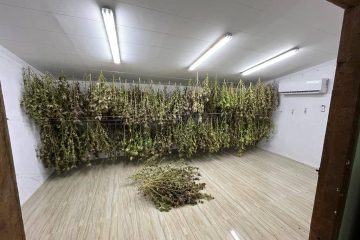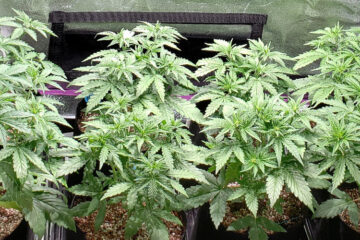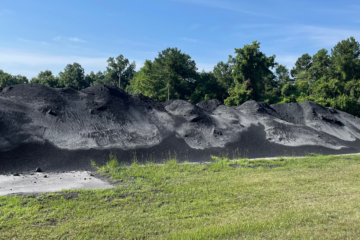Hemp extract is a concentrated form of hemp from which processors remove impurities and plant matter, leaving only specific compounds intact. Most hemp extracts contain cannabidol (CBD) as the primary ingredient. CBD is a cannabinoid that some say delivers many health benefits, including pain relief and stress relief.
Hemp extracts typically fall into three categories: full-spectrum extracts, broad-spectrum extracts, and isolates.
- Full-spectrum extracts are minimally processed and contain most hemp compounds, including cannabinoids, terpenes, and flavonoids. Full-spectrum extracts may contain tetrahydrocannabinol (THC), but this compound typically occurs in concentrations less than 0.3 percent. Because the concentration of THC is below 0.3 percent, the federal government classifies these extracts as legal. Although THC is a psychoactive compound, concentrations of less than 0.3 percent usually do not make users feel intoxicated.
- Broad-spectrum extracts contain most of the same cannabinoids, terpenes, and flavonoids found in full-spectrum extracts but remove the THC altogether.
- Finally, hemp isolate products remove all of the compounds found in hemp, leaving only one cannabinoid, usually CBD.
Full-spectrum extracts generally offer the most therapeutic benefits to consumers, as they contain a wide array of beneficial compounds.
However, those sensitive to THC or those who undergo periodic drug screenings may wish to select THC-free products such as broad-spectrum extracts or CBD isolates. All of these products may be useful for pain relief and stress reduction.
Benefits of Hemp Extract
CBD
Hemp extracts offer many benefits to recreational and medical consumers. In recent years, CBD, the primary ingredient, has grown in popularity for its apparent therapeutic effects on the body.
Some report this cannabinoid to have a soothing and calming effect, relieving pain, reducing stress, and elevating the user’s mood. CBD is not psychoactive and leaves its users feeling calm and clearheaded.
Terpenes
In addition to CBD, full-spectrum and broad-spectrum extracts contain terpenes. Terpenes are the chemical compounds that give most plants their distinct aromas.
Research suggests that terpenes offer many therapeutic effects. For example, limonene, a terpene commonly found in hemp, may help reduce stress and boost mood. Linalool, another terpene in many hemp varieties, may provide a calming and relaxing sensation.
Hemp contains more than 100 types of terpenes, each with their own unique therapeutic effects.
Flavonoids
Full-spectrum and broad-spectrum hemp extracts also contain compounds referred to as flavonoids. These phytonutrients work synergistically with terpenes to affect the flavor and smell of hemp.
Flavonoids also play a role in determining a plant’s pigmentation. For example, purple hemp plants may be high in flavonoids like anthoxanthins or anthocyanins.
Flavonoids likely have many therapeutic benefits for consumers, as well. Some studies show that certain flavonoids may have potent anti-inflammatory, antioxidant, and anti-fungal properties.
There are roughly 20 varieties of flavonoids found in hemp, and each type of flavonoid possesses its own distinct benefits. More research is necessary to determine the full therapeutic potential of flavonoids, but their benefits are plentiful.
Other Cannabinoids
Aside from CBD, full-spectrum and broad-spectrum hemp extracts contain trace amounts of many other cannabinoids. Hemp extracts may contain cannabinol (CBN), cannabigerol (CBG), cannabichromene (CBC), and many other beneficial cannabinoids.
CBG may reduce pressure in the eyes and stimulate the appetite, while CBC may reduce pain and elevate the mood. Hemp contains more than 100 known cannabinoids, and these may offer a wide array of medicinal benefits.
The Entourage Effect
One of the apparent benefits of full-spectrum and broad-spectrum hemp extract is called the “Entourage Effect.” This is a synergistic effect, in which all of the cannabinoids, terpenes, and flavonoids in hemp combine to increase the beneficial properties of each individual compound.
For example, CBD may be more effective at relieving pain and stress when combined with other hemp compounds.
Why Hemp Instead of Marijuana?
Manufacturers choose to extract CBD and other compounds from hemp instead of extracting it from marijuana for one primary reason: legality.
The federal government in the United States defines hemp as cannabis that contains up to 0.3 percent THC. Any cannabis plants that have more than 0.3 percent THC are marijuana.
Under the current federal statute, marijuana is a controlled substance, and its production, sale, and use are illegal.
With the passage of the 2018 Farm Bill, neither hemp nor hemp derivatives are considered federally controlled substances.
Although this means that hemp extracts are federally legal, some states have imposed restrictions on hemp products. Consumers should consult federal, state, county, and municipal laws before purchasing or using hemp products.
Hemp Extraction Methods
Ethanol Extraction
One of the more commonly used hemp extraction methods is ethanol extraction. With this method, manufacturers use ethanol or other high-proof alcohols to extract beneficial compounds from hemp plants. Because alcohol is a polar solvent, it can form bonds with both water-soluble and fat-soluble compounds.
This means that ethanol can draw out all of the cannabinoids, terpenes, and flavonoids in hemp, making this method an excellent way to produce full-spectrum and broad-spectrum extracts.
However, some additional processing may be necessary to remove chlorophyll and unwanted plant waxes from the extract. The use of ethanol in food products and hemp extracts is generally safe, and the ethanol extraction method does not leave behind harmful residues or contaminants. However, manufacturers must be cautious when producing ethanol extracts, as ethanol is flammable.
Using the ethanol extraction method, manufacturers apply heat to hemp flowers, which decarboxylates them, thereby activating their beneficial cannabinoids. Once decarboxylation is complete, the manufacturers soak the plant matter in ethanol to draw out the compounds.
Finally, they remove the plant matter and then filter or evaporate the ethanol, leaving only the hemp extract behind.
Hydrocarbon Extraction
Another method of full-spectrum hemp extraction involves using petroleum-based solvents such as butane, propane, or a butane-propane blend. Because these are non-polar solvents, they strip the cannabinoids, terpenes, and flavonoids from the hemp while leaving out unwanted compounds such as chlorophyll.
Although this method, referred to as hydrocarbon extraction, efficiently extracts CBD and other desirable compounds from hemp, the solvents used may leave behind harmful residues and contaminants in the hemp extracts. Hydrocarbon extraction can also be hazardous, as petroleum-based solvents are highly flammable.
With this extraction method, manufacturers liquefy hydrocarbon gases and steep the hemp flowers in the liquid solvent. After they have extracted all of the plant matter’s beneficial compounds, they evaporate the solvent and winterizethe extract to remove undesirable substances.
CO2 Extraction
The use of carbon dioxide (CO2) has become increasingly popular in hemp extraction because it is not flammable and does not leave behind toxic residue. CO2 hemp extraction also has a lower environmental impact than other methods such as hydrocarbon extraction.
The CO2 method can yield high-quality extracts, but it requires expensive equipment and typically yields less extract than other methods.
The three primary types of CO2 hemp extraction are supercritical, mid-critical, and subcritical. These differ in the amounts of heat and pressure used during the extraction process.
Using the supercritical method, technicians heat and pressurize CO2 until it reaches a “supercritical” state. In this state, CO2 contains both liquid and gas properties, enabling it to penetrate and dissolve porous solids quickly.
This method can yield very high CBD concentrations, making it ideal for producing CBD isolates, but it may damage other beneficial hemp compounds.
The mid-critical and subcritical methods are similar to the supercritical CO2 extraction method. However, but these techniques require less heat and pressure. Moreover, both methods are less efficient and take more time than supercritical extraction.
However, they do not damage the other beneficial cannabinoids, terpenes, and flavonoids found in hemp. This makes the mid-critical and subcritical methods particularly useful in the creation of full-spectrum and broad-spectrum extracts.
Carrier Oil Extraction
One of the oldest extraction methods involves using a carrier oil such as olive or coconut oil to draw out beneficial hemp compounds. This method is safe and simple, and quickly done at home without expensive machinery. Olive and coconut oils are safe to consume and do not leave behind harmful contaminants.
Although carrier oil extraction is safe and inexpensive, it produces low yields of active cannabinoids, and the oils are perishable. This method is not ideal for commercial operations due to its inefficiency.
With this method, technicians decarboxylate hemp flowers, submerge them in a carrier oil, then heat the mixture again for several hours. Once the hemp compounds sufficiently transfer into the oils, specialists filter the remaining plant matter from the oil and discard it.
Water Extraction
Some manufacturers use water as a solvent-less hemp extraction solution. This is an inexpensive and high-yielding extraction method, but it is more complicated than carrier oil extraction. Water extraction is safe and non-toxic and does not leave harmful residues or contaminants in the extract.
To perform water extraction, manufacturers mix hemp flowers or trimmings with ice water. They stir this mixture to separate the trichomes from the other plant matter. After the chilled trichomes fall from the plants, water extraction specialists strain the resulting mixture through special mesh bags. The extracted compounds settle at the bottom of the bags allowing extractors to remove the remaining water and plant material.
Which Hemp Extraction Method is Best?
All hemp extraction methods have their own advantages and disadvantages. The decision to use one method versus others will depend largely on the manufacturer’s goals and financial means. If the goal is to produce a full-spectrum or broad-spectrum extract, using ethanol or subcritical CO2 extraction may be most effective. If the manufacturer wants to create a CBD isolate, a supercritical CO2 extraction will yield the purest extract.
Those who wish to make their own extracts at home may choose the carrier oil or water extraction methods, as these are safe and do not require the expensive equipment used in CO2 extraction. Hydrocarbon extraction is generally not recommended in commercial or home settings, as the process is dangerous and can leave harmful contaminants in the extracts.
Choose the Right Company
Consumers who wish to buy hemp extracts must choose products offered by a reputable manufacturer. The type of hemp extraction method used may play a distinct role in the quality of the product. Of course, many other factors also can shape the quality of the extract. Examples include whether the manufacturer used fresh plants or dried flowers, the plants’ age at harvest, the plant’s growing conditions, and the specific cultivar. These factors help determine the purity of the extract and the types and concentrations of cannabinoids, terpenes, and flavonoids that the product contains.
Closing Thoughts on Hemp Extraction Methods
Hemp extracts offer a myriad of therapeutic benefits to both recreational and medical users. These products often deliver a calming and soothing sensation, relieving pain, and reducing stress while leaving the user feeling clearheaded and functional. Full-spectrum, broad-spectrum, and CBD isolate products are all useful in promoting tranquility, focus, and relaxation.
Although hemp extracts may be highly beneficial, consumers must understand how manufacturers develop the products. The type of hemp extraction method used may determine the extract’s quality, purity, and composition.
For those who wish to produce their own hemp extracts, choosing the right hemp strain is essential. We use the best hemp genetics, growing environment, and harvesting techniques to ensure our products are healthy and viable.



0 Comments